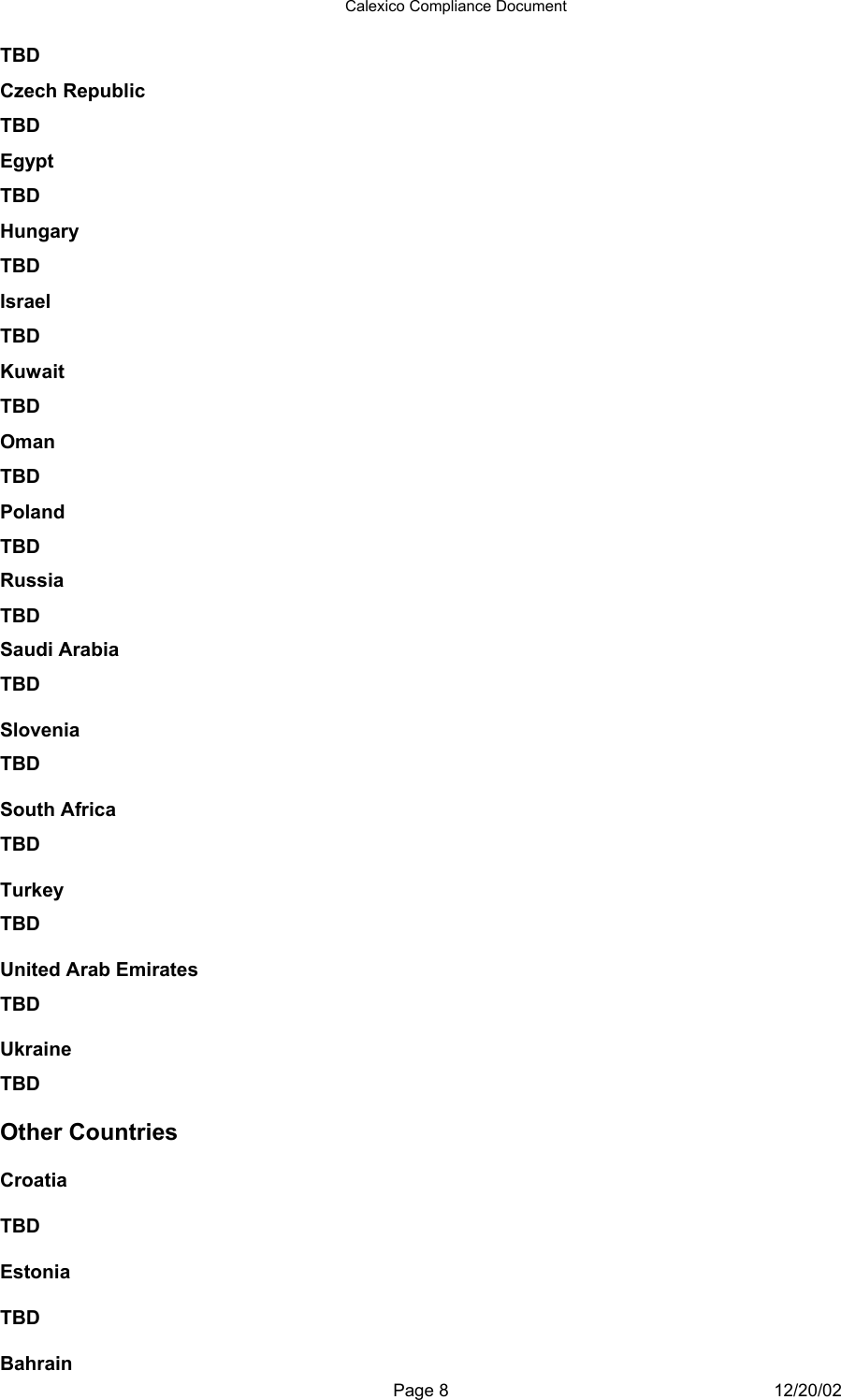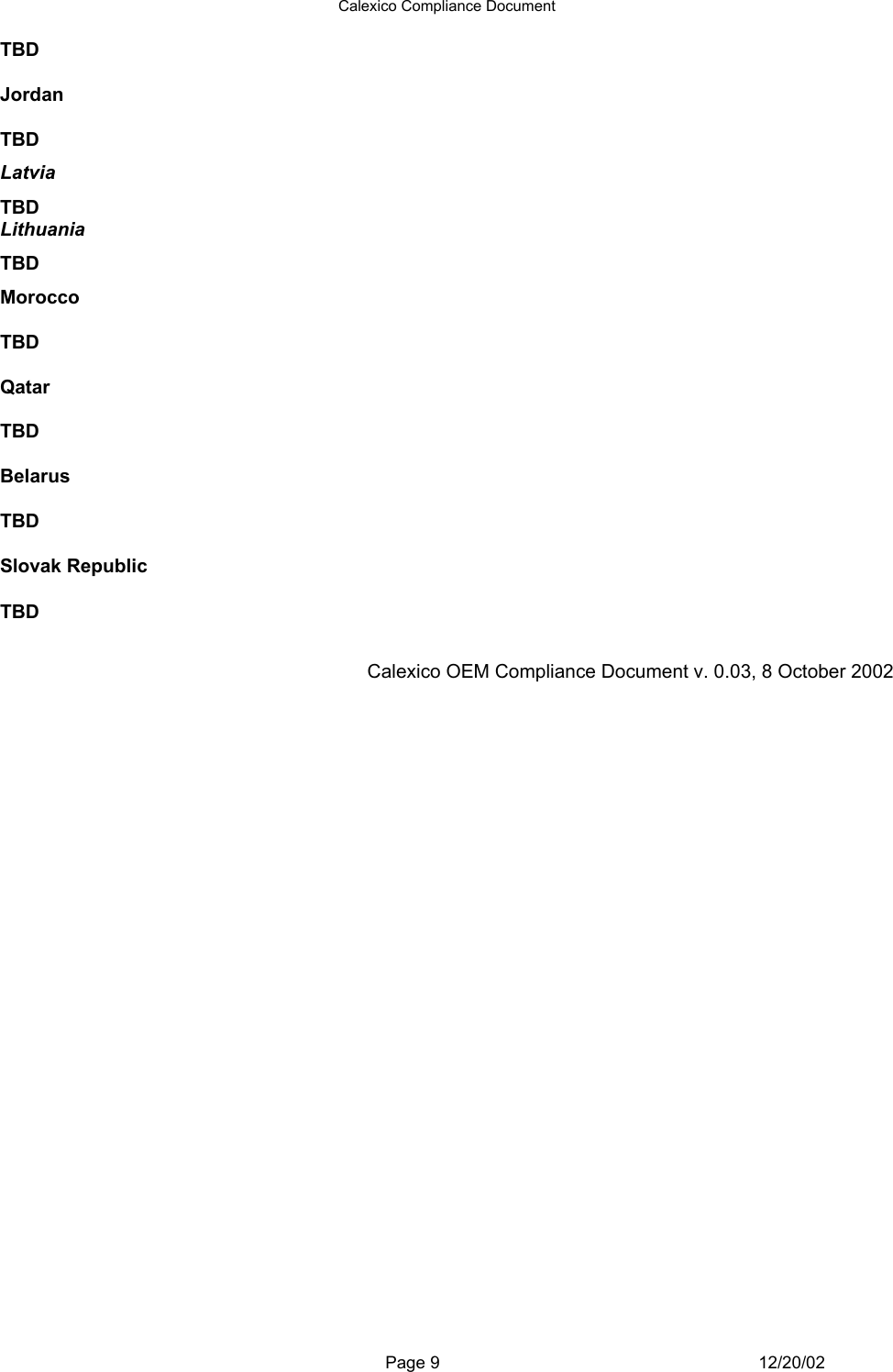Intel WM3A2100 Mini-PCI Transmitter Card User Manual OEM Compliance Guide
Intel Mobile Communications Mini-PCI Transmitter Card OEM Compliance Guide
Intel >
Contents
- 1. Revised Users Manual
- 2. OEM Compliance Guide
OEM Compliance Guide
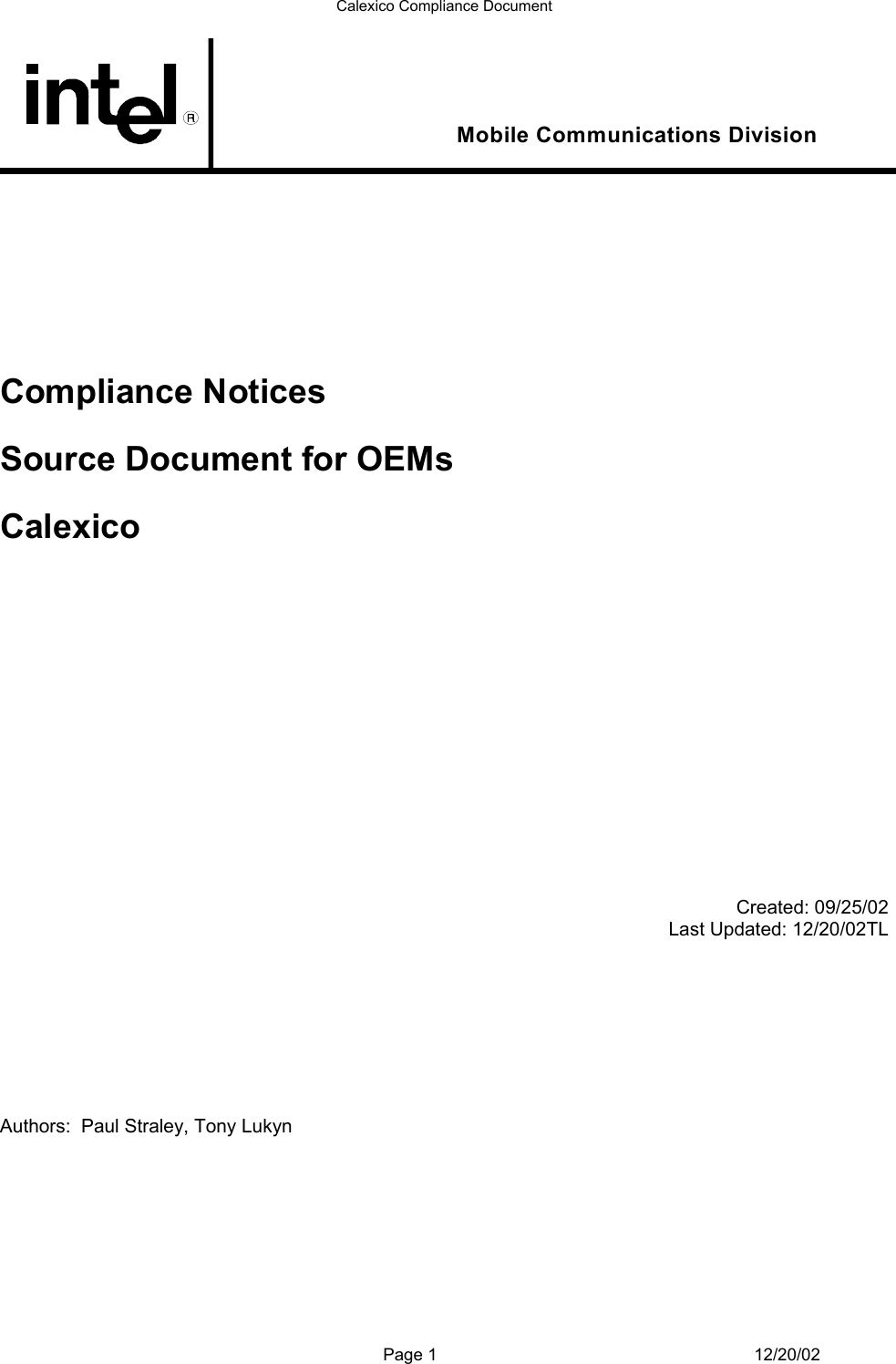
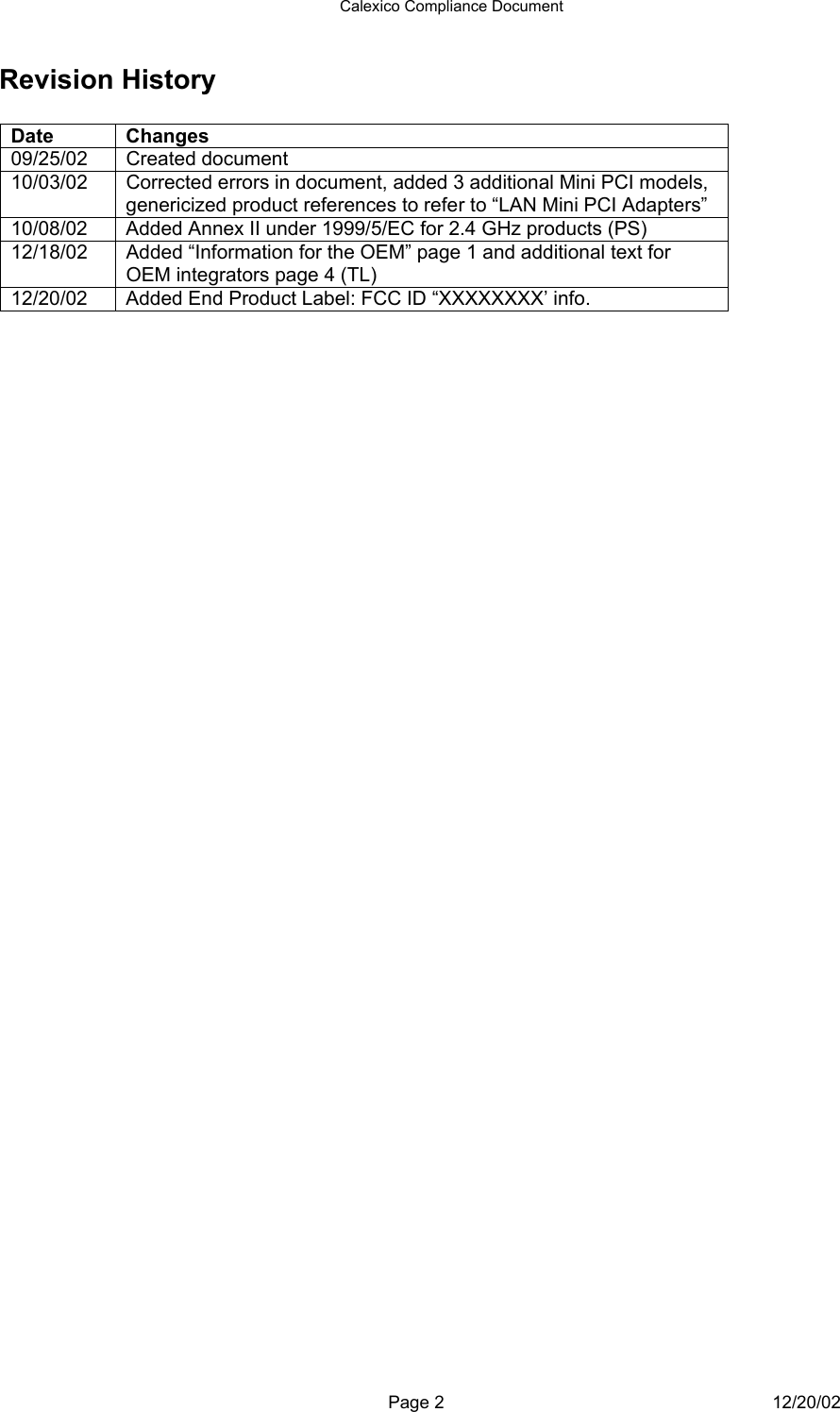
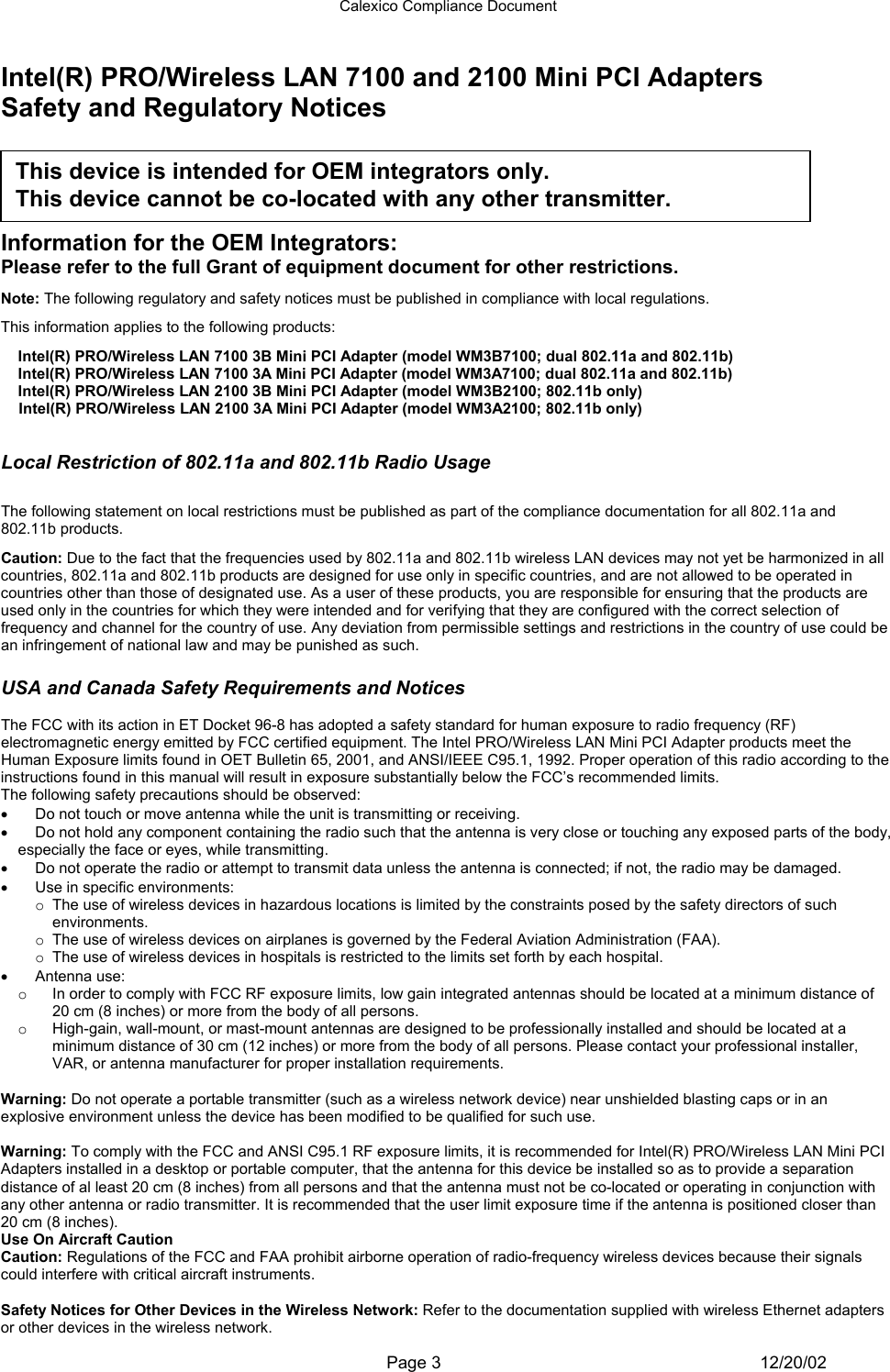
![Calexico Compliance Document Page 4 12/20/02 This device is intended only for OEM integrators under the following conditions: 1) The antenna must be installed such that 20 cm is maintained between the antenna and users. For laptop installations, the antenna must be installed to ensure that the proper spacing is maintained in the event the users places the device in their lap during use (i.e. positioning of antennas must be placed in the upper portion of the LCD panel only to ensure 20 cm will be maintained if the user places the device in their lap for use) and 2) The transmitter module may not be co-located with any other transmitter or antenna. As long as the 2 conditions above are met, further transmitter testing will not be required. However, the OEM integrator is still responsible for testing their end-product for any additional compliance requirements required with this module installed (for example, digital device emissions, PC peripheral requirements, etc.). IMPORTANT NOTE: In the event that these conditions can not be met (for example certain laptop configurations or co-location with another transmitter), then the FCC authorization is no longer considered valid and the FCC ID can not be used on the final product. In these circumstances, the OEM integrator will be responsible for re-evaluating the end product (including the transmitter) and obtaining a separate FCC authorization. End Product Labeling This transmitter module is authorized only for use in devices where the antenna may be installed such that 20 cm may be maintained between the antenna and users (for example access points, routers, wireless ASDL modems, certain laptop configurations, and similar equipment). The final end product must be labeled in a visible area with the following: "Contains TX FCC ID: XXXXXXXXXXXXXXX," where XXXXXXXXXXXXXXX is replaced by the FCC ID on the module being integrated. RF Exposure Manual Information That Must be Included The users manual for end users must include the following information in a prominent location "IMPORTANT NOTE: To comply with FCC RF exposure compliance requirements, the antenna used for this transmitter must be installed to provide a separation distance of at least 20 cm from all persons and must not be co-located or operating in conjunction with any other antenna or transmitter." Additional Information That Must be Provided to OEM Integrators The end user should NOT be provided any instructions on how to remove or install the device. USA Radio Frequency Interference Requirements FCC Regulations Part 15 Declaration of Conformity (DoC) Intel Corporation declares that the equipment described in this document is within the requirements of the Code of Federal Regulations listed below: Title 47 Part 15, Subpart B, Class B for a digital device. This declaration is based upon the compliance of the Intel(R) PRO/Wireless LAN Mini PCI Adapters to the above standards. Intel has determined that the models listed have been shown to comply with the applicable technical standards if no unauthorized change is made in the equipment and if the equipment is properly maintained and operated. These units are identical to the units tested and found acceptable with the applicable standards. Records maintained by Intel continue to reflect that units being produced under this Declaration of Conformity, within the variation that can be expected due to quantity production and tested on a statistical basis, continue to comply with the applicable technical standards. FCC Rules and Regulations - Part 15 This device uses, generates and radiates radio frequency energy. The radio frequency energy produced by this device is well below the maximum exposure allowed by the Federal Communications Commission (FCC). This device complies with the limits for a Class B digital device pursuant to Part 15 subpart C of the FCC Rules and Regulations. Operation is subject to the following two conditions: 1. This device may not cause harmful interference. 2. This device must accept any interference received, including interference that may cause undesired operation. The FCC limits are designed to provide reasonable protection against harmful interference when the equipment is installed and used in accordance with the instruction manual and operated in a commercial environment. However, there is no guarantee that interference will not occur in a particular commercial installation, or if operated in a residential area. If harmful interference with radio or television reception occurs when the device is turned on, the user must correct the situation at the user’s own expense. The user is encouraged to try one or more of the following corrective measures: • Re-orient or relocate the receiving antenna. • Increase the separation between the equipment and receiver. • Connect the equipment into an outlet on a circuit different from that on which the receiver is connected. • Consult the dealer or an experienced radio/TV technician for help. CAUTION: The Part 15 radio device operates on a non-interference basis with other devices operating at this frequency. Any changes or modification to said product not expressly approved by Intel could void the user's authority to operate this device. European Union CE Marking and Compliance Notices Products intended for sale within the European Union are marked with the Conformité Européene (CE) Marking, which indicates compliance with the applicable Directives and European standards and amendments identified below. This equipment also carries the Class 2 identifier. [for position only; new no. to come]](https://usermanual.wiki/Intel/WM3A2100.OEM-Compliance-Guide/User-Guide-292779-Page-4.png)
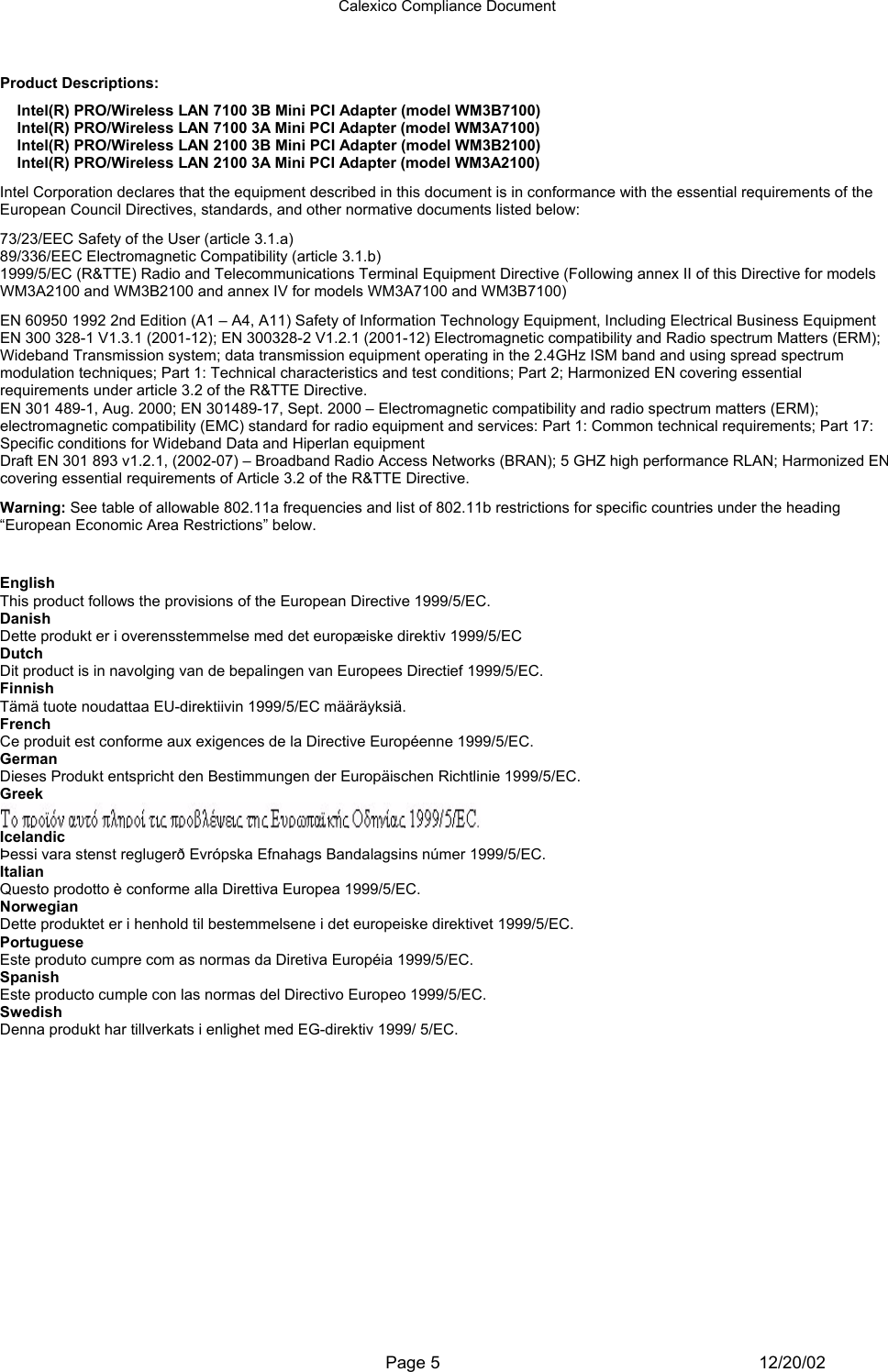
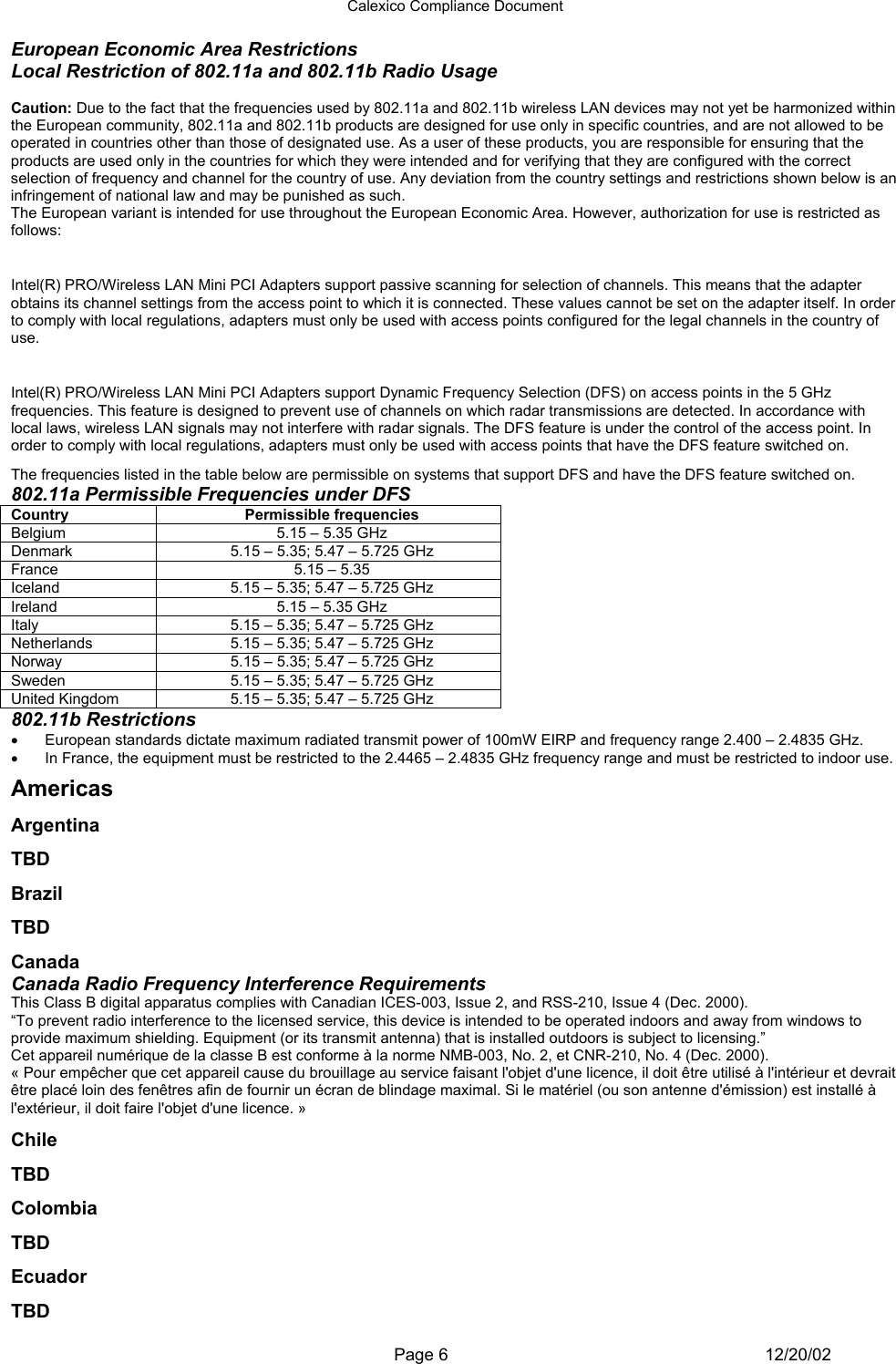
![Calexico Compliance Document Page 7 12/20/02 Mexico TBD Peru TBD Venezuela TBD Asia Pacific Australia TBD China TBD Hong Kong TBD India TBD Indonesia TBD Japan TBD Korea TBD Malaysia TBD New Zealand TBD Philippines TBD Singapore TBD Sri Lanka TBD Thailand TBD Vietnam TBD Europe, Middle East, and Africa [for CE and R&TTE countries see beginning of document] Bulgaria](https://usermanual.wiki/Intel/WM3A2100.OEM-Compliance-Guide/User-Guide-292779-Page-7.png)
